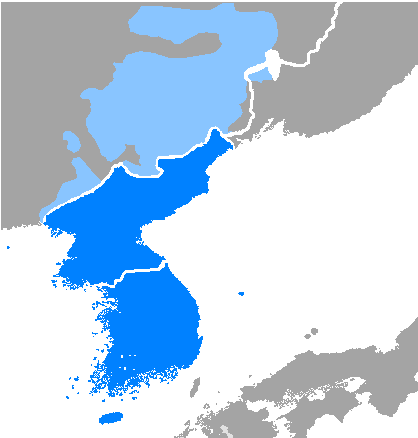Glottolog: kore1284 | ||
 | ||
Linguistic classification: One of the world's primary language families | ||
The Koreanic languages are a language family consisting of the modern Korean language together with extinct ancient relatives closer to it than to any proposed links. Among extant languages, Korean is considered by most linguists to be a language isolate and by some others as part of the widely rejected Altaic family or the Dravido-Korean languages. Some even suggest an Austronesian connection.
Contents
The Jeju language of Jeju Island, considered by some as a dialect of modern Korean, is distinct enough to be considered a language in its own right by other authorities. Some consider that rather than being a language isolate, Korean forms a small language family, together with Jeju.
Classification
The periodization of the historical stages of Korean is as follows:
Ancient Koreanic languages
Several ancient languages of the Korean peninsula—Silla, Buyeo, Goguryeo, Dongye, Okjeo, Baekje, Gojoseon and Ye-Maek—may have been ancestral to, related to, or part of Old Korean. Two branches are sometimes posited, Buyeo and Han.
Modern Koreanic languages
Modern Korean is traditionally considered a single language. However, Jeju (Cheju) is sometimes classified as a distinct language, for example in the UNESCO atlas on endangered languages. If that is accepted, there are two modern Koreanic languages, Jeju and Korean proper.
